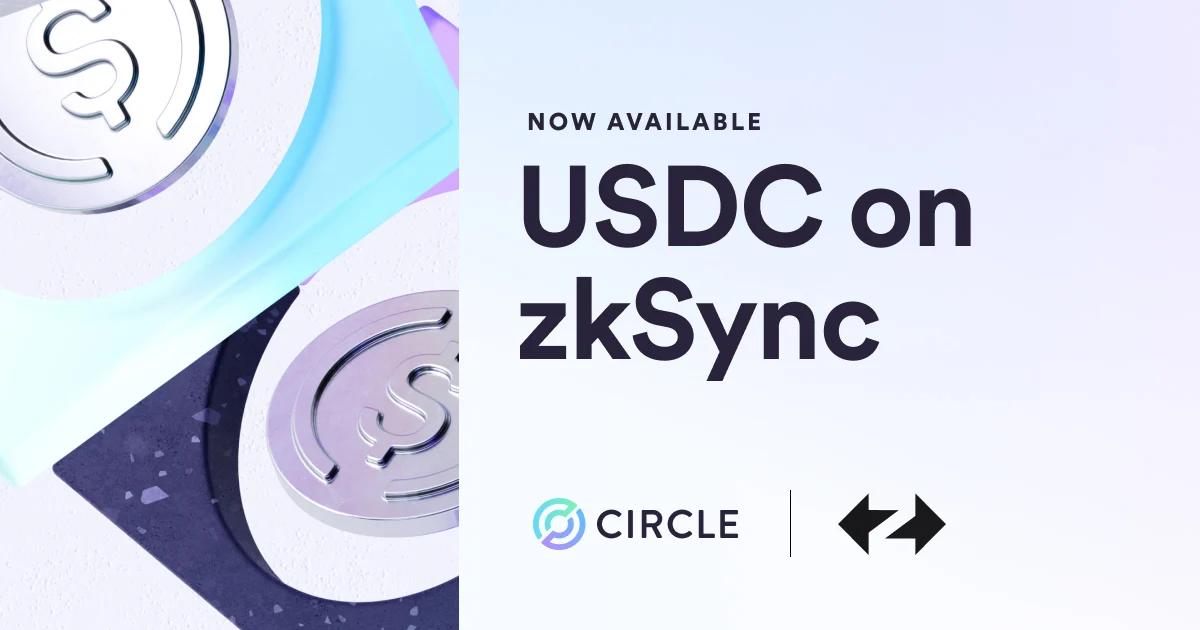In a significant expansion move, Circle, the issuer of the popular stablecoin USD Coin (USDC), has announced its integration with Ethereum’s zkSync, a zero-knowledge layer-2 solution. This strategic step comes as a response to the growing demand for stablecoins within the DeFi (Decentralized Finance) sector, particularly among applications developed on the zkSync blockchain.
A New Frontier for USDC
Circle’s announcement on April 9 marks a pivotal moment for USDC, highlighting its commitment to broadening the stablecoin’s accessibility across diverse blockchains. By adding support for zkSync, USDC now boasts a presence on 16 blockchains, including Ethereum, Solana, Base, and Arbitrum, among others. This expansion not only demonstrates Circle’s adaptability to the evolving blockchain landscape but also strengthens USDC’s position as a cornerstone in the DeFi ecosystem.
zkSync is renowned for its implementation of zero-knowledge proofs and rollups, technologies that collectively enhance transaction speed and reduce costs on the Ethereum network. These advancements have propelled zkSync to the forefront of layer-2 solutions, making it an attractive platform for over 180 decentralized applications and a bustling community of over 5.7 million unique active wallet addresses in the last 30 days.
Advantages of zkSync Integration
For developers and businesses, the integration of USDC with zkSync opens up new possibilities for building robust DeFi applications on a stable, Circle-backed foundation. Users can now utilize USDC on zkSync for a variety of purposes, including payments, trading, borrowing, and lending. Additionally, the ability to redeem USDC for U.S. dollars directly through Circle or swap it for other USDCs across blockchains via cross-chain bridges further enhances its utility and flexibility.
Circle’s vision for zkSync goes beyond mere transactional efficiency. By tapping into zkSync’s potential to boost Ethereum’s throughput while adhering to the network’s foundational values, Circle aims to contribute to a more scalable, cost-effective, and decentralized financial system.
A Cautious Approach to Expansion
Circle’s venture into new blockchains has not been without its hesitations. The company momentarily halted USDC minting on the Tron blockchain in February, citing an ongoing assessment of blockchain suitability as part of its risk management strategy. This cautious approach reflects Circle’s commitment to maintaining the integrity and reliability of USDC across all platforms.
The backdrop to Circle’s strategic moves includes regulatory challenges, such as the lawsuit filed by the United States Securities and Exchange Commission against Justin Sun and the Tron Foundation for alleged securities violations. These legal complexities underscore the importance of a careful and considered approach to blockchain integration and expansion.
As Circle continues to navigate the intricate web of blockchain technologies and regulatory landscapes, its latest foray into zkSync signifies a significant leap towards fostering a more interconnected and efficient DeFi ecosystem. With USDC’s integration into zkSync, Circle not only advances its own platform but also contributes to the broader goal of enhancing the Ethereum network’s capacity for innovation and growth.
